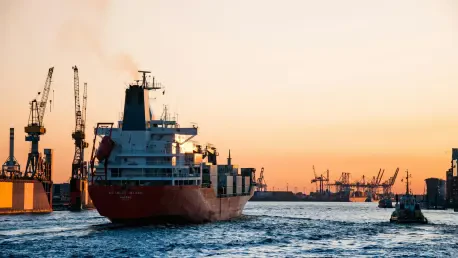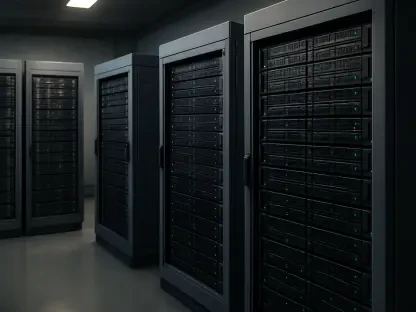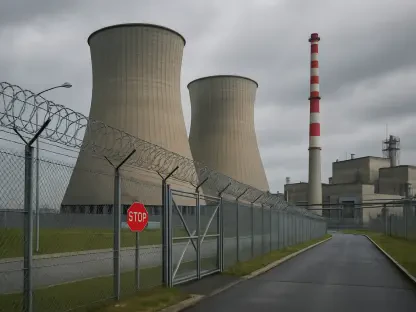As the world increasingly turns towards cleaner energy, a significant development at the Port of Stockton is setting a benchmark for California’s decarbonization initiatives. This central hub for the storage and distribution of renewable fuels is taking an impressive stride with BWC Terminals’ inauguration of its expanded facility. This move not only signifies the commitment to reducing the carbon footprint of heavy-duty transportation but also represents a substantial alignment with California’s stringent environmental objectives. The Port of Stockton, located in the San Joaquin Valley, is emerging as a key player in spearheading efforts within the region, supporting the transition to sustainable energy sources and facilitating efficient logistics for renewable fuels. This article explores how strategic enhancements at the port are propelling the state towards its ambitious climate goals while also bolstering economic opportunities.
Strategic Infrastructure Enhancements
BWC Terminals has made a significant leap forward by unveiling a Marine Oil Terminal Engineering and Maintenance Standards (MOTEMS) compliant dock at the Port of Stockton. Marking nearly thirty years since such infrastructure advancements were seen in California, this modern dock is an embodiment of innovation and commitment to environmental responsibility. The MOTEMS criteria emphasize the need for earthquake-resistant structures, which play a crucial role in minimizing oil spill risks and ensuring the safety of both the environment and public health. This facility reflects the state’s dedication to maintaining high standards in marine infrastructure, ensuring age-old vulnerabilities in oil transportation become a thing of the past. The integration of these standards has set a new benchmark in the realm of energy-efficient marine operations, boosting the port’s capabilities and positioning it as a cornerstone in California’s green strategy.
Economic and Environmental Benefits
At the inauguration event, key stakeholders, including U.S. Representative Josh Harder and top executives from BWC Terminals, celebrated the expansion’s dual benefits. The facility is expected to provide significant economic growth by creating new jobs while reinforcing logistics capabilities for renewable fuels. Harder highlighted the importance of the port as a vital economic engine driving job creation and business opportunities within the San Joaquin Valley, harmonizing with the state’s broader decarbonization aims. This pivotal project is poised to advance the region’s economy, not only enhancing port efficiency with new infrastructure but also elevating Stockton’s role as a facilitator of green energy logistics. The dual focus on economic and environmental gains underscores the port’s critical function as California moves towards sustainable and eco-friendly practices in heavy-duty transportation logistics, demonstrating how local initiatives can amplify statewide efforts.
Port of Stockton’s Pioneering Role
Under the strategic vision of Kirk DeJesus, Director of the Port of Stockton, the port continues to lead the shipping industry through sustainable innovations. Its location at the delta of the San Joaquin River affords strategic advantages, not just in renewable diesel and biodiesel transfers but also in supporting California’s overarching maritime infrastructure. The port’s commitment to advancing its capabilities in low-emission fuel storage and transfer techniques sets an example for others in the industry. By facilitating efficient renewable fuel logistics necessary for the transition away from fossil fuels, the Port of Stockton solidifies its position as a trailblazer within the state. These practices not only bolster the port’s operational efficiency but also elevate its significance as a key contributor to California’s sustainable future, echoing an imperative of environmental stewardship in every facet of operations.
Regional Logistics Growth
The article further delves into the logistical surge witnessed in areas surrounding Stockton, notably places like Lathrop, French Camp, and Manteca. As businesses seek more economical alternatives to the expensive locales of the San Francisco Bay Area, these regions have grown in attractiveness for setting up e-commerce establishments and industrial ventures. Industrial land is plentiful, and housing affordability combined with keen connectivity to major consumer zones make these locales ripe for development. Access to multimodal logistics options enhances their potential as vital contributors to California’s growth trajectory. This regional expansion inherently complements the advancements at the Port of Stockton, highlighting its importance as a logistics hub central to distribution networks. The collaborative environment fosters opportunities that augment existing port enhancements, driving logistical efficiency that benefits the broader San Joaquin Valley and supporting the vision of a decarbonized future.
BWC Terminals’ Essential Contributions
BWC Terminals leads in bulk liquid storage and logistics across North America, operating 22 sites with a total storage capacity of 20 million barrels. Their diverse portfolio includes renewable fuels and essential products, making them vital to the supply chain. Recent expansions have incorporated state-of-the-art safety and environmental systems to strengthen infrastructure, preventing spills and seismic damage. BWC’s enhanced renewable fuel logistics align with a clean energy mission, supporting California’s climate goals and contributing to its decarbonization targets. Collaboration with government and local partners underscores their commitment to California’s clean energy future. BWC’s efforts are crucial in promoting eco-friendly practices and aligning with the state’s climate objectives.
The Port of Stockton expansion marks a significant step in infrastructure enhancement and regional growth, fostering partnerships aimed at achieving California’s climate goals. Through leadership, economic impact, and environmental focus, the port strengthens the state’s logistical power and promotes a sustainable future, advancing California’s decarbonization aspirations.









